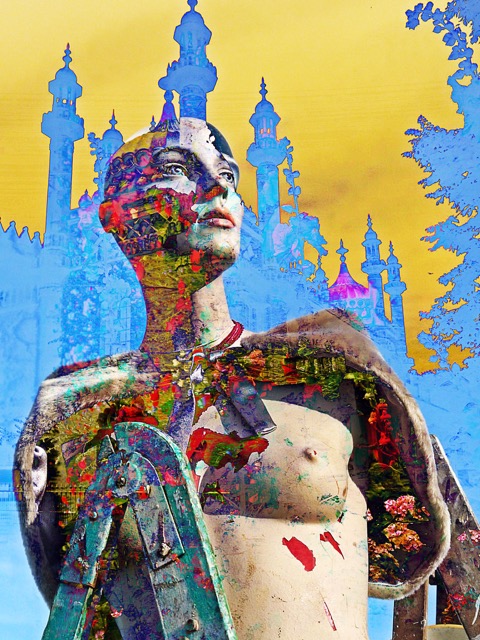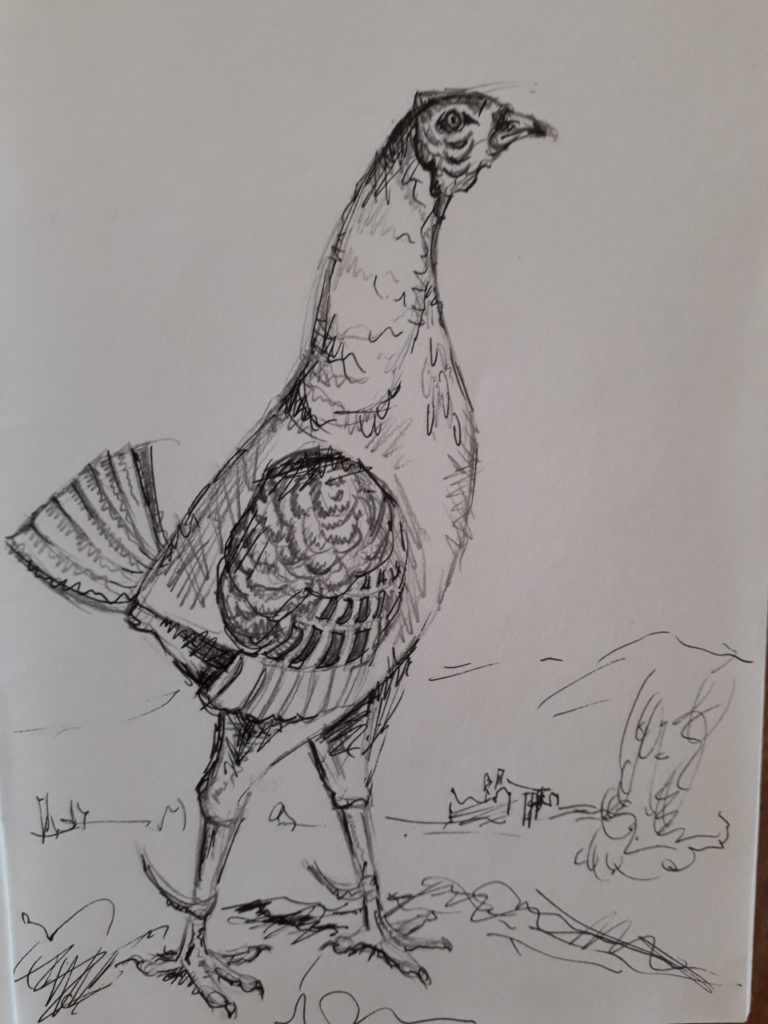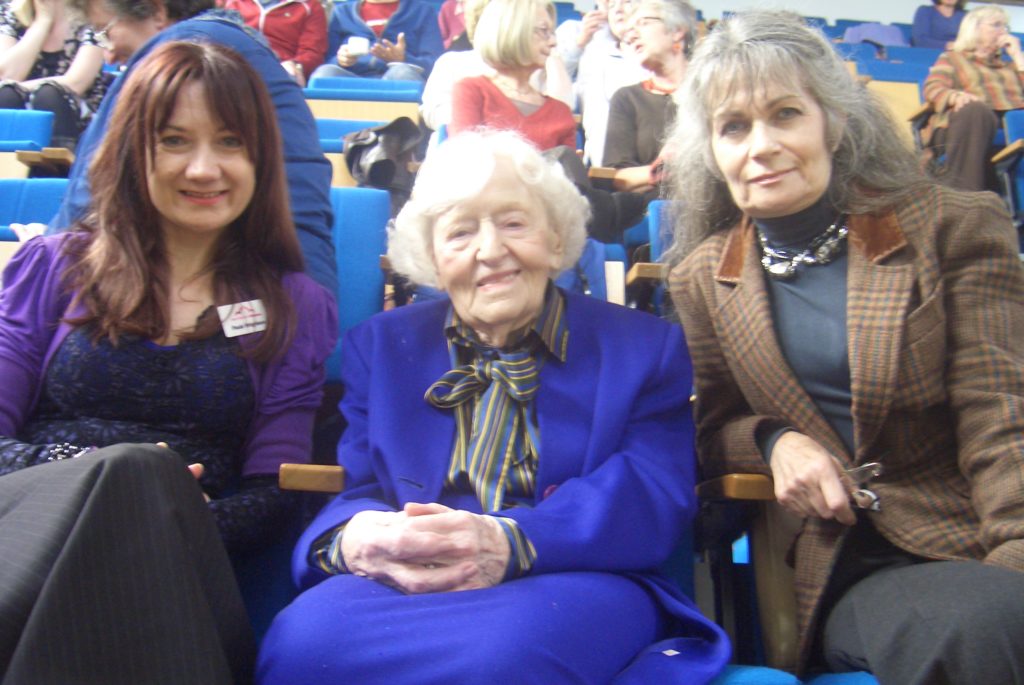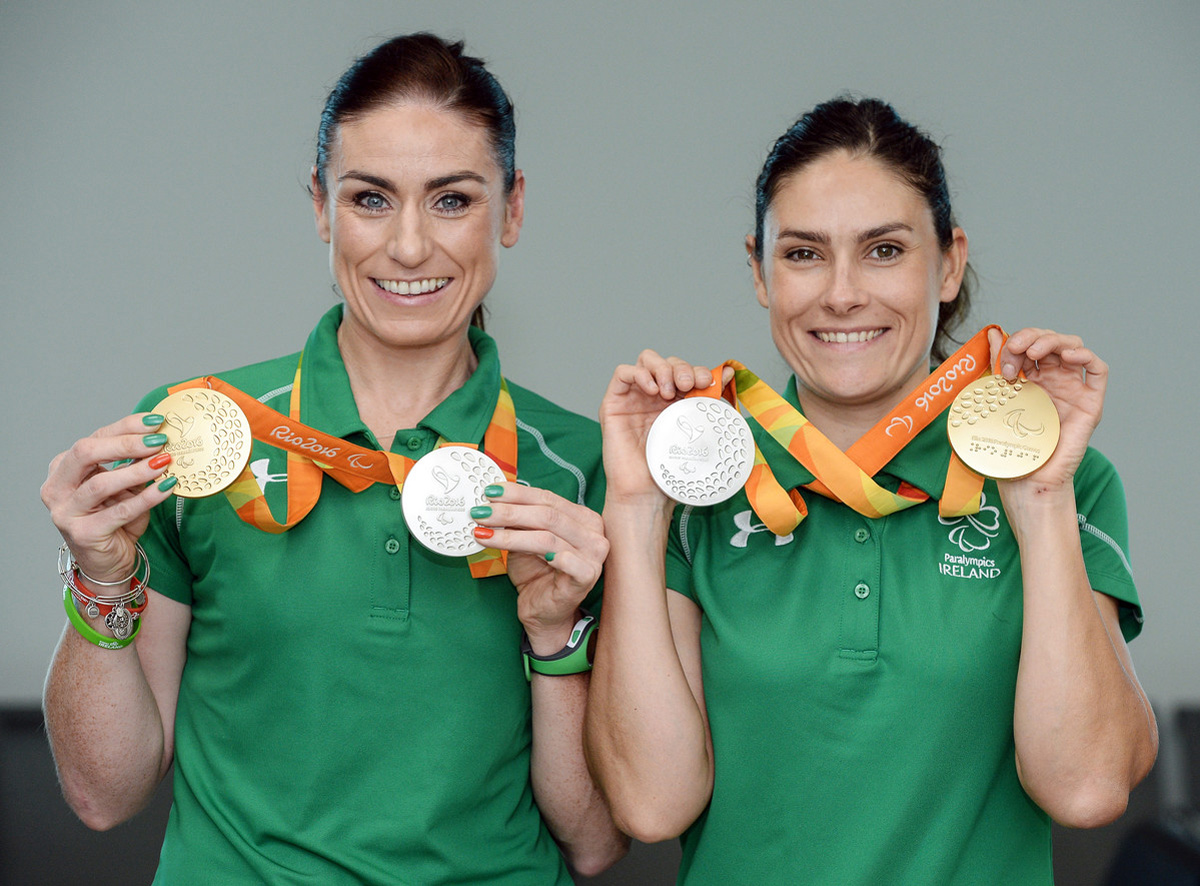
This is a legacy story from an earlier version of our website. It may contain some formatting issues and broken links.
In a previous blog I looked at the difficulties in deciphering a 1936 hand-written letter. This page from a 1953 letter is both typed and hand-written and is from Lady Evelyn Izme Mottistone to Preston Manor’s Honorary Curator, Margery Roberts and is part of a correspondence between the two women in March that year.
The original letter exists in an archive at Preston Manor. I’ve chosen it because it demonstrates the ease with which you can read typed script compared to the difficulties in reading period hand-writing. There’s a pleasing story here too, and an insight into the genteel manners, letter-writing etiquette and a flavour of life in Brighton in the early 1950s.

Lady Mottistone’s letter 1953
This sample is the reverse of the letter which Lady Mottistone either typed herself or had a secretary type for her and to which she adds a hand-written addendum.
What does the letter say?
The letter was sent from Lady Mottistone’s London residence, 31 Greycoat Gardens, Westminster, SW1 dated 5th March 1953 and concerns arrangements linked to her charity work. In this instance a day-trip to Brighton in June for a party of women Old Age Pensioners or OAPs living in poverty in London.” Some of them are rather elderly,”Lady Mottistone notes. An elderly person in the mid-1950s was born in the 1880s or earlier, so these were a group of Victorians. She adds; “And some even paddle!”
The hand-written part of the letter reads; “I do hope you won’t think all this trespassing on your kindness. Could you see some of the dim dark…rooms many of my club members live in…you would realise how much this day’s outing means to them. They look forward to it all the year, believe me. Yours sincerely, Evelyn Mottistone.”

Visiting your lovely home
Margery Roberts, 45 was the daughter of museum curator, Henry Roberts. After his death aged 81 in 1951, she inherited both the Manor’s curatorship and the grace-and-favour apartments that went with it. Unqualified as a museum professional Margery nevertheless threw herself into the role and managed to do a good job. She did have one quirk and that was ‘accidentally on purpose’ allowing others to assume she was the Lady of the House, a fact supported by Lady Mottistone’s request that she might; “possibly bring some of my old age pensioner club members for a summer outing to Brighton, visiting your lovely home on the way back.”
The plan was for a party of 37 old folks, with Lady Mottistone at the head, to have ‘a long sit on the beach…I certainly hope for deckchairs in the sun in true tripper spirit!’ broken by luncheon and afternoon tea. The arrangements for these meals form a great deal of content of the letters.
Discuss the whole matter with Mr Alf
Margery was eager to please her grand friend who she’d met via the social-networking at which she was adept. This would have been in-person at civic functions, art exhibitions, charity events and so forth as well as private gatherings. In 1950s Britain your social and professional path was smoothed considerably by knowing members of the upper classes, especially persons with a title.
With her intimate knowledge of Brighton and its eating-places Margery recommends the Savoy Cinema Restaurant, “on the front.”
However, restaurant manager, Mr Alf turns out to be “too concerned with making profit from the Coronation” to take bookings for large summer parties. The Coronation of Queen Elizabeth II was the event of 1953 taking place on 2nd June.
Margery was obliged to lean on Mr Alf to have him consider the OAP booking for Wednesday June 24th. Knowing her friend’s title will open doors, Margery suggests that Lady Mottistone write to Mr. Alf directly. The ploy works and agreement is eventually made for the party to occupy one end of the “bright airy” restaurant with views of the Palace Pier and sea; the room “curtained off, I believe.”
The two ladies discuss menu and prices, Margery concerned the 2/6d (two shillings and sixpence) a head for “soup, joint, sweet and coffee” might exceed the club’s budget.
“I have never found him easily cooperative”
After the tussle with Mr Alf, the pair must now lock-horns with Mr Avery of the Brighton Entertainments Committee, manager of the Rotunda Café in Preston Park. Margery finds Mr Avery uncooperative “when I have had telephone conversations with him.”
It must be said that Margery had a rather stately manner, though she was exceptionally kind-hearted in person, so possibly Mr Avery took umbrage at the tone of her speaking voice on the phone. However he agrees to accommodate the party of elderly women for tea at 4.45pm but the unfortunate proviso is a charge of two shillings a head, just under the price of their three-course meal followed by coffee in the seafront restaurant.
The vexed issue of time-keeping worries Lady Mottistone, “one is never quite sure of ‘time’ with the elderly. I find they either return to the coach much too early or else straggle in cheerfully rather late.”

Visiting Preston Manor after tea
After finalising plans for the day-trip Margery makes a suggestion to Lady Mottistone on 11th March 1953 asking if she is able to slip away by taxi from the old ladies while they are on the beach and take refuge at “her house,” Preston Manor
“Spending as little or as long as you could manage at my house…you could be perfectly alone in my sitting room, which looks over the park. It was my mother’s bedroom, and so many people have spoken of its peaceful atmosphere and my friends always say that they feel refreshed from being in it.”
Margery’s description of this particular room at Preston Manor has always pleased me because it is now my office. Peaceful though the room was in 1953, Margery’s attempts to lure Lady Mottistone away from the beach failed according to her reply on 2nd April.
“Your most kind invitation to rest at Preston Manor is very tantalising, but I know you will understand my feeling that I must stay with my old ladies.”
She goes on to suggest Margery join them at the Rotunda Café for tea writing, “it would give me great pleasure,” yet she warns, “please do not feel you must come! For you might find, delightful as they are, my 36 old age pensioners, are rather an inquisition!”
I can’t help but think that one of the group may have died, for there were originally 37.
Arrangements were made, however for the 36 pensioners to see Preston Manor after tea, Lady Mottistone writing; “We should reach Preston Manor by about 5.45pm and have, as you suggest, half an hour or so, to walk through the rooms and gardens. June 24th should be a Red-Letter day.” She hoped to get the elderly ladies on the coach and back to London “just before 9pm.”
Was the day-trip a success?
We can’t know the answer because there are no letters after 18th June.
I hope the ladies got to enjoy the beach on this annual treat, but was it beach weather? The British weather for June 1953 can be found on record as, “rather cool and dull with slightly above average rainfall.” Not good!
Coronation Day is infamous for its terrible weather conditions, “dull damp and unseasonably cold,” with heavy rain showers, the temperature in London reaching only 11.7˚C, which you’d expect in early March not June. However the temperature shot up during the last week of June with 26˚C reached on June 26th so maybe things were improving by Wednesday 24th ?
And Benedict Cumberbatch?
Lady Evelyn Mottistone, our 1953 correspondent with Margery Roberts of Preston Manor, was the maternal great-great-grandmother of theatre and opera director, Sophie Hunter who married actor, Benedict Cumberbatch on 14th February 2015. The couple held their wedding reception at Mottistone Manor on the Isle of Wight. The house is now National Trust property (only the gardens can be visited) and was formerly the ancestral home of the Seely family into which Evelyn married.
Warrior, the War Horse
Lady Evelyn’s first husband, Captain George Crosfield Norris Nicholson died aged 31 following an aircraft accident in Hampshire on 11th March 1916.
In 1917 Evelyn married again, this time to John Edward Bernard Seely, 1st Baron Mottistone who as General ‘Jack’ Seely led one of the last cavalry charges in history.
This took place in March 1918 at the Battle of Moreuil Wood in France with the General mounted on the famous war horse, Warrior, the “horse the Germans couldn’t kill.” In 2014 Warrior was posthumously awarded the PDSA’s Dicken Medal for courage in the face of war.
Lady Mottistone was a widow of six years at the time she was writing to Margery Roberts in 1953 clearly keeping herself busily occupied with charitable work.
I am amused by a comment Margery makes in her letter of 12th March 1953 to Mr Avery, Brighton’s Entertainments Manager based at Royal York Buildings.
Regarding Lady Mottistone she writes, “she herself is elderly and rather delicate.”
Evelyn Mottistone was aged 67 in 1953 and, despite Margery’s diagnosis of antiquity and delicacy, would go on to live another twenty-three years dying aged 90 on 11th August 1976. Benedict Cumberbatch was born in London three weeks earlier.
The last word goes to Margery who expressed a feeling of kinship with her grand friend
“You were so sympathetic to me, and reminded me of my mother, who, too, in spite of such delicate health never thought of herself in “giving out” to others.”
Paula Wrightson, Venue Officer Preston Manor















































